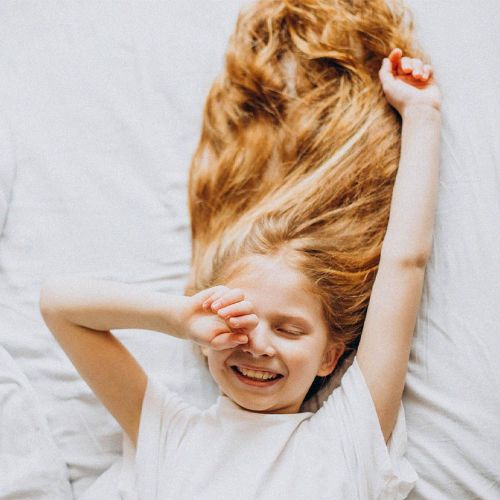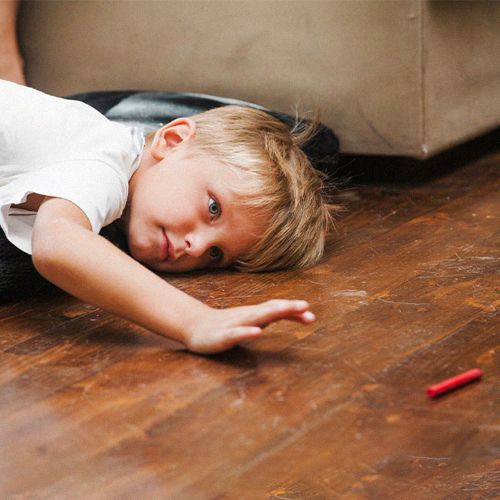Sleep is the key to success for the day
Plunging into the arms of Morpheus every night allows you to recover from your day. But did you know that we spend 1/3 of our life sleeping? Discover all the benefits of sleep…
Sleep, a succession of cycles
Sleep is defined as a decrease in the state of consciousness. Thus, a loss of vigilance or a decrease in muscle tone is its main characteristic. Essential for nervous and physical recovery, sleep must be both qualitative and quantitative.
Sleep functions as a series of cycles of varying lengths depending on the age of the person. Thus, a sleep cycle is defined by two sleep phases in adults: slow-wave sleep and REM sleep.
Slow-wave sleep is when brain activity decreases significantly. Physical fatigue is recovered during this period. REM sleep coincides with periods when the brain functions with the same intensity as during the day. Dreams come to life during this phase of sleep.
Sleep in children
How many hours of sleep do children need per night?
As soon as a child is born, sleep evolves to adopt a definitive form around the child’s 24th month. This reorganization of sleep will see the appearance of more slow waves and deep sleep phases.
Thus, a newborn sleep on average 20 hours per week. He does not distinguish day from night and does not sleep more than 2 to 3 hours in a row. Between the ages of 1 and 2, children sleep between 11 and 14 hours per day. Between the ages of 3 and 5, they sleep between 10 and 13 hours a day, including naps. It should be noted that sleep becomes mostly nocturnal between the ages of 3 and 6, depending on the child. From the age of 6 until 12, a child sleeps between 9 and 12 hours per night.

As previously explained, sleep is characterized by a succession of cycles. In children, professionals estimate that there are between 6 and 8 cycles per night. Their duration ranges from 90 to 120 minutes. Note that the length of cycles also changes with age: a newborn has sleep cycles of about 50 minutes.
Why establish a routine before going to sleep?
For many parents, bedtime is a difficult time. Children are sometimes afraid to be alone in their room or simply don’t want to stop discovering the world around them. Establishing a routine before going to sleep can provide a sense of security and comfort. Sleep becomes an enjoyable activity associated with a moment of pleasure.
For this routine to be positive and calm, it must be based on regular schedules and be associated with calm activities. A story, a cuddle, a song, and a massage all contribute to making bedtime pleasant and calm. The ritual does not last for hours. It simply helps to reassure the child. A 20 to 30-minute routine is sufficient.
To help children fall asleep, the body secretes melatonin, a sleep-inducing compound. Studies show that the light from screens causes a decrease or even a stop in the production of this molecule. The screens and the lights live must thus disappear from the evenings to avoid delays in falling asleep or poor-quality sleep.

Sleep is a key element to ensure during the day
How does lack of sleep impact the body?
When a person lacks sleep, the impact on the body is felt. Indeed, it influences both physical and intellectual capacities. At the intellectual level, concentration becomes difficult, the mind seems less sharp, memorization less efficient, sleepiness is present during the day, …
Lack of sleep also leads to changes in mood with more difficult management of emotions. Children, like adults, become sensitive, easily irritated, or hyperactive.
Finally, insufficient sleep also has an impact on weight gain and a decrease in immune defenses with a permanent state of general fatigue and the appearance of dark circles.
How does sleep contribute to the proper development of the body?
Scientists agree on the numerous benefits of sleep on the human body. It is an essential activity that allows, especially in children, a maturation of the nervous system. This will allow for better learning during the waking phases, particularly in the acquisition of language, motor functions, or understanding. Moreover, during the sleep cycles, the brain rests.
During sleep, the body produces several molecules such as growth hormone. The brain synthesizes this hormone. It allows the growth of the different organs by multiplying the number of cells.
Sleep also contributes to the reinforcement of the immune system. During sleep, the body eliminates all the waste and toxins produced during the day. Good sleep thus contributes to decreasing the sensitivity to infections.

Summary
Sleep represents a fundamental need for the body’s good physical and emotional balance. Sleep functions in cycles, alternating phases of slow-wave sleep and REM sleep. In children, sleep guarantees good development and learning in good conditions. Parents can establish a safe and loving routine to help children adhere to and enjoy sleep to ensure that this time is of sufficient quality and quantity.
Key take-home messages
- Sleep is defined as a series of cycles with phases of slow-wave and REM sleep
- In children, the night is made up of 6 to 8 sleep cycles lasting between 90 and 120 minutes
- A child must have a sufficient quantity and quality of sleep
- Sleep facilitates the organization of information acquired during the day and the construction of memory
- Sleep allows development and learning in good conditions
References
- Institut national de la santé et de la recherche médicale, Rythmes de l’enfant : De l’horloge biologique aux rythmes scolaires, 2001
- Institut national de la santé et de la recherche médicale, Sommeil : Faire la lumière sur notre activité nocturne, 2017
- Naitre et grandir, Sommeil : l’importance de la routine du dodo, 2016
- Office de la Naissance et de l’Enfance, Le sommeil de votre enfant, 2011
- Réseau Morphée, Le sommeil de 0 à 18 ans, 2022
- Réseau Morphée, Le sommeil : mode d’emploi à destination des jeunes et de leurs parents, 2015
- <a href=”https://www.freepik.com/photos/kids-t-shirt”>Kids t shirt photo created by freepik – www.freepik.com</a>
- <a href=”https://www.freepik.com/photos/child-sleep”>Child sleep photo created by senivpetro – www.freepik.com</a>
- <a href=”https://www.freepik.com/photos/kids-sleep”>Kids sleep photo created by wayhomestudio – www.freepik.com</a>
- <a href=”https://www.freepik.com/photos/kids-bed”>Kids bed photo created by pvproductions – www.freepik.com</a>